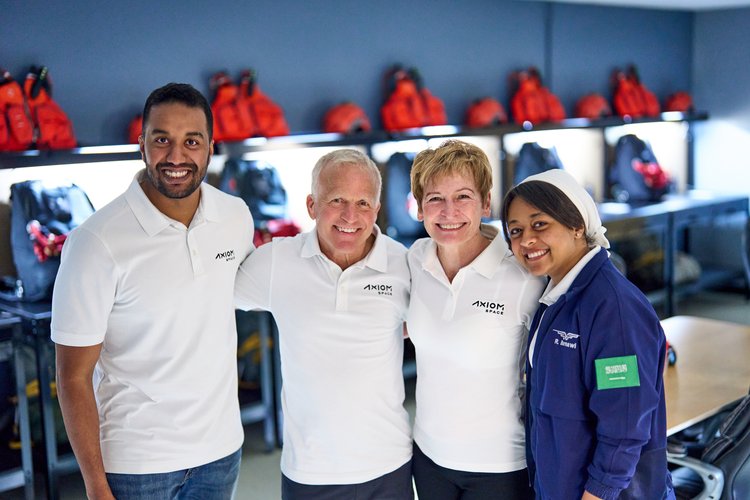
Representatives of NASA, SpaceX and Houston, Texas-headquartered AxiomSpace, Inc., gathered Monday afternoon to discuss progress towards the second all-private crewed expedition to the International Space Station (ISS), targeting liftoff from historic Pad 39A at Florida’s Kennedy Space Center (KSC) at 5:37 p.m. EDT on 21 May. Commanded by former NASA Chief Astronaut, the world’s most experienced female spacewalker and America’s most flight-seasoned spacefarer, Peggy Whitson, the Ax-2 mission aims to remain on-orbit for about ten days, supporting a research portfolio of over 20 multidisciplinary experiments spanning life sciences, physical sciences, technology demonstration fields and Science, Technology, Engineering, Arts and Mathematics (STEAM) educational outreach.
Whitson and her Ax-2 crewmates—airshow pilot, athlete and motorsports endurance racer John Shoffner and Saudi Arabia’s Ali Al-Qarni and Rayyanah Barnawi—have a two-day “launch window”, spanning Sunday 21st and Monday 22nd May. In remarks made on Monday after the conclusion of the Ax-2 Flight Readiness Review (FRR), Ken Bowersox, NASA’s associate administrator of the Space Operations Mission Directorate, described finding that two-day window as “a real challenge”.
Any delay much beyond next Monday is expected to see Ax-2 stood down until after the CRS-28 Cargo Dragon mission, currently aiming for a 3 June launch. According to NASA ISS Program Manager Joel Montalbano, any delay beyond 22 May will lead teams to “look for next best opportunity” to fly Ax-2, based upon visiting vehicle traffic to the space station and launch pad availability at KSC.
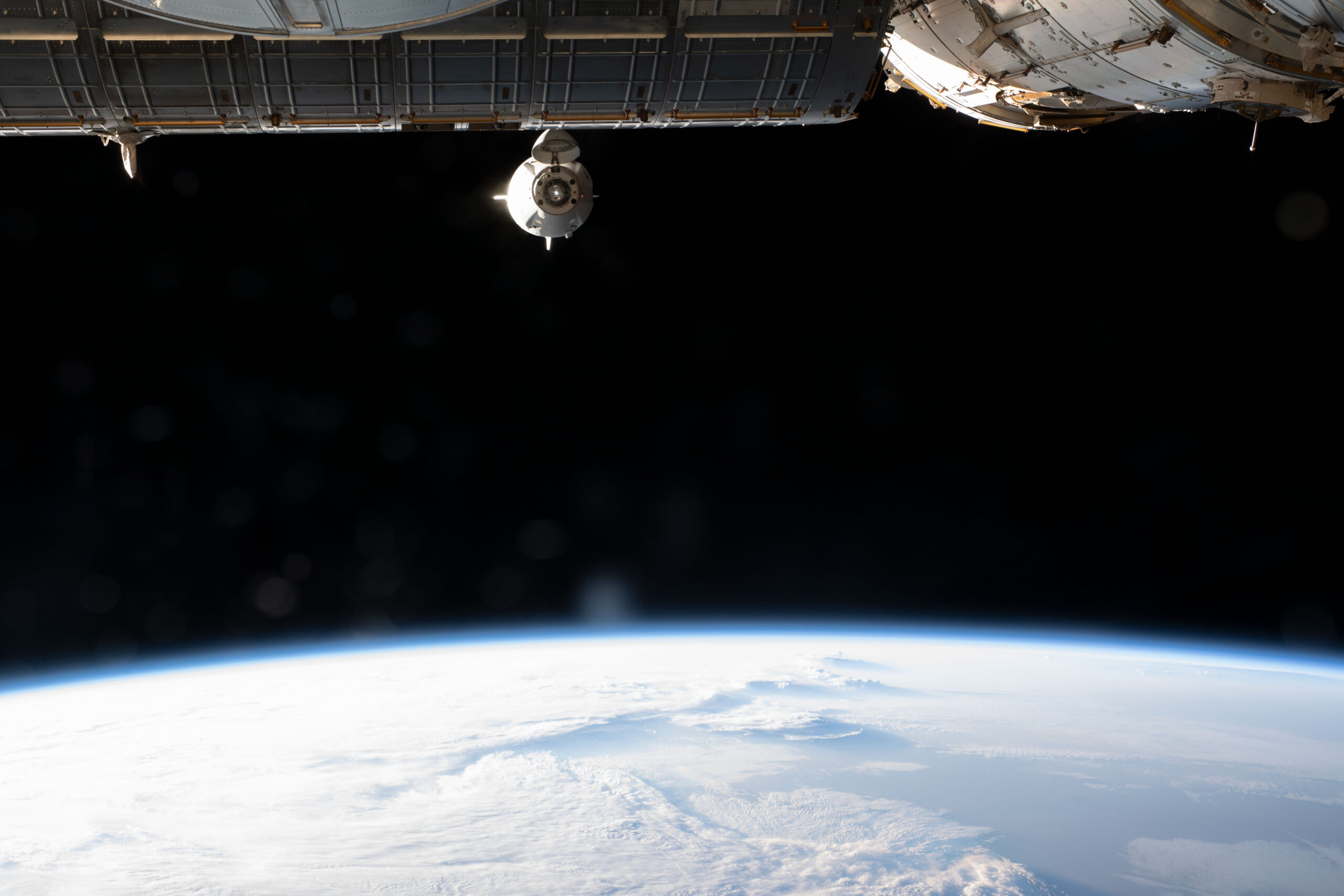
With only two docking ports available on the U.S. Operational Segment—at the forward and space-facing (or “zenith”) faces of the station’s Harmony node—there exists limited availability for U.S. crewed and uncrewed visitors through the summer months. Dragon Endeavour presently occupies the forward port, having been relocated there earlier in May by Crew-6 Commander Steve Bowen, Pilot Warren “Woody” Hoburg and Mission Specialists Andrei Fedyayev and Sultan Al-Neyadi from its earlier berth at the zenith port, in readiness for CRS-28’s planned occupancy from early June until early July.
After that, the long-awaited Crew Flight Test (CFT) of Boeing’s CST-100 Starliner, crewed by NASA astronauts Barry “Butch” Wilmore and Suni Williams, is targeting a launch on 21 July for an approximately eight-to-ten-day voyage to the ISS. Further docking-port confliction is anticipated in mid-August as Dragon Endurance arrives with the four-person Crew-7 and Dragon Endeavour departs with the outgoing Crew-6.
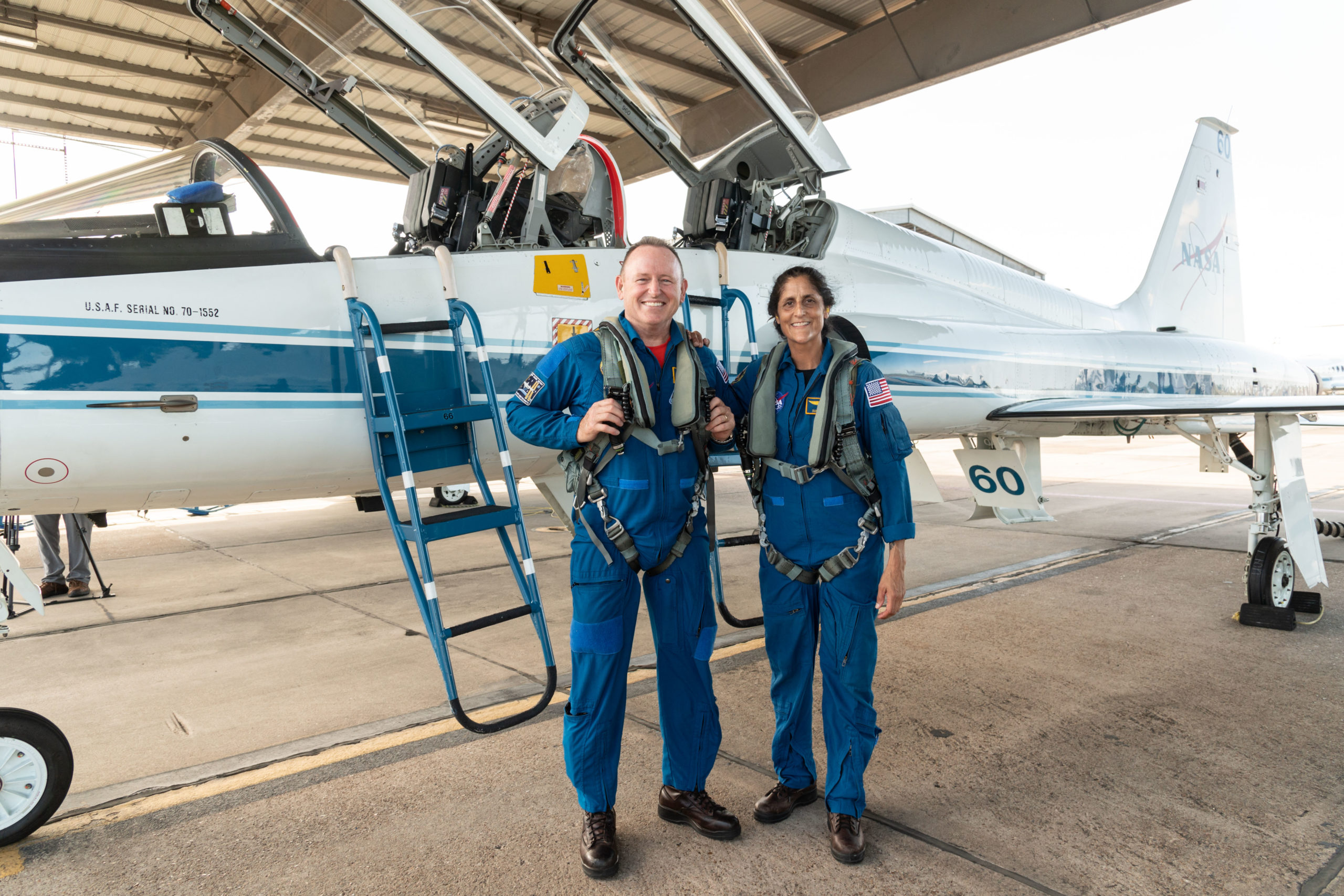
Mr. Montalbano noted that current program planning carries “enough margin” to cover potential launch delays and that CRS-28 may slip “a few days to the right”, if needed, to accommodate Ax-2 in late May whilst continuing to preserve CFT’s 21 July launch date target. But any substantial delay for Ax-2 beyond late May would almost certainly lead to a lengthier delay, with some recent speculation that September could be the next earliest available opportunity for Whitson’s crew to fly.
With Monday’s completion of the Ax-2 FRR milestone, efforts are now entering high gear for a “Dry Dress” rehearsal for the crew on Friday, which will involve Whitson, Shoffner, Al-Qarni and Barnawi donning their customized SpaceX launch and entry suits and heading out to Pad 39A. SpaceX is also targeting Friday for a Static Fire Test of the B1080 Falcon 9 booster assigned to this mission, making her first launch.
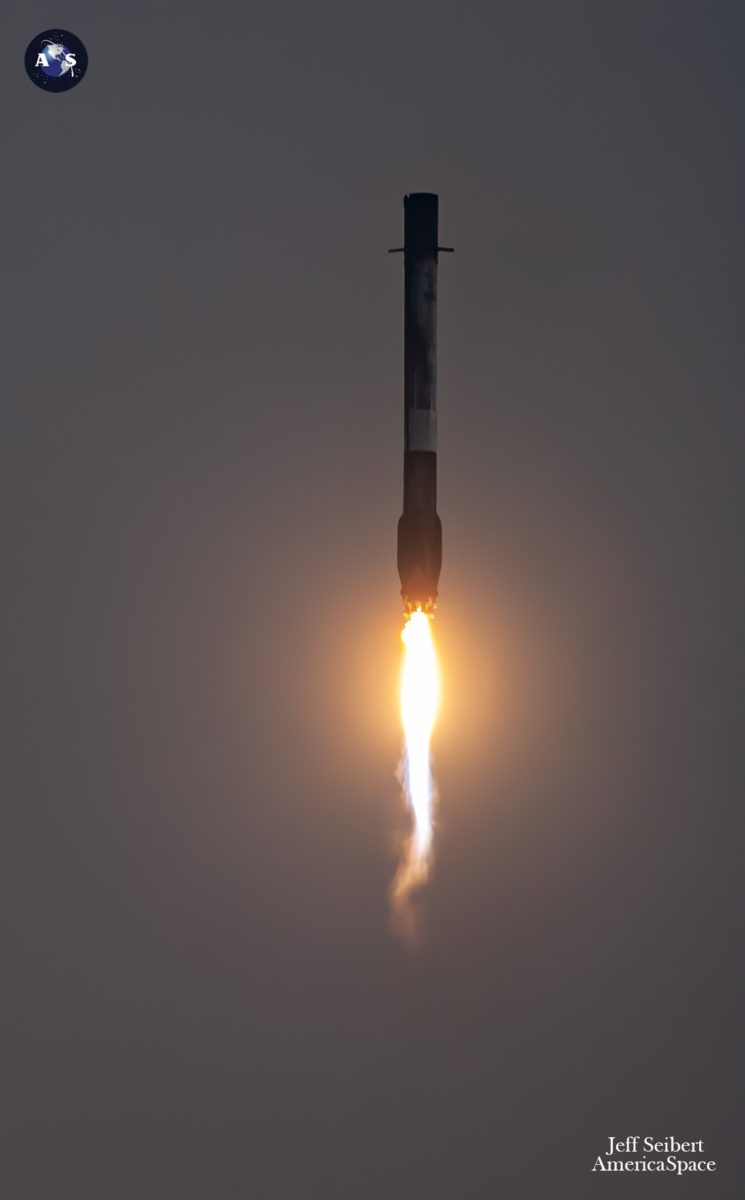
Another first is the maiden Return to Launch Site (RTLS) of a Falcon 9 core on a crewed mission; all previous Crew Dragons have seen their boosters return to land on the Autonomous Spaceport Drone Ship (ASDS), offshore in the Atlantic Ocean. This is expected to have no noticeable impact for Whitson’s crew.
But the ascent profile will see “a little bit of extra Falcon performance”, according to SpaceX Vice President of Build and Flight Reliability Bill Gerstenmaier. And it will include a difference of about eight seconds in the timing of Main Engine Cutoff (MECO) at the end of first-stage flight.
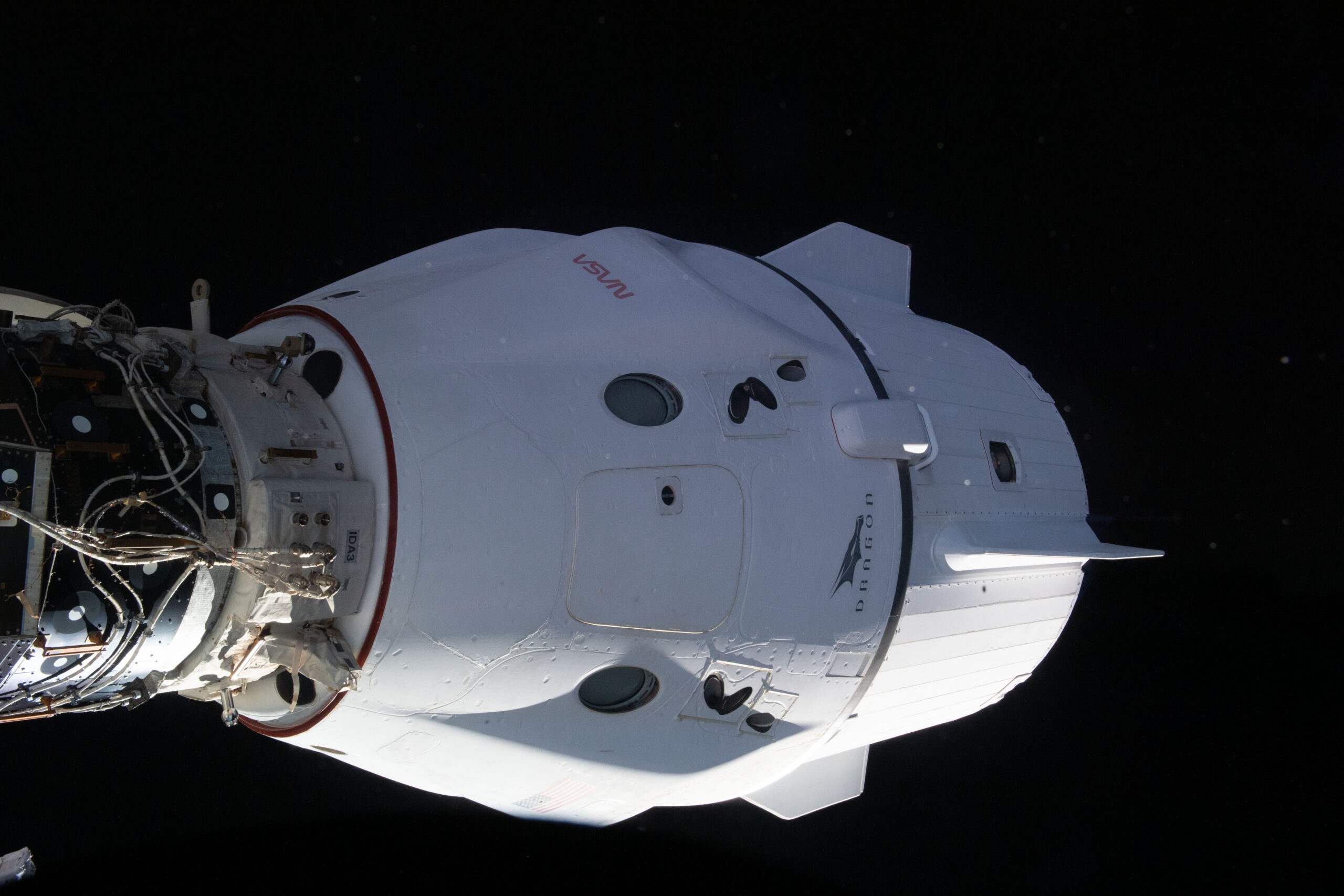
An on-time launch aboard Dragon Freedom at 5:37 p.m. EDT on Sunday will produce a docking at Harmony’s zenith port less than 16 hours later around 9:24 a.m. EDT on Monday 22nd, the second-shortest launch-to-arrival transit of any Crew Dragon so far. The new arrivals will be welcomed aboard by the seven-man Expedition 69 crew, where they will participate in safety briefings before heading into a packed week of work.
According to comments at today’s post-FRR event, Ax-2 has been formally shortened from its original mission design of 12 days, ten of which would be spent docked at the ISS, to ten days, eight of which will be spent docked. AxiomSpace Chief of Mission Integration and Operations Derek Hassmann explained that the reduction has been implemented “to make the mission fit” with ongoing ISS activities, prioritizing Ax-2’s scientific payloads, but threatening “no impact to the research objectives”.
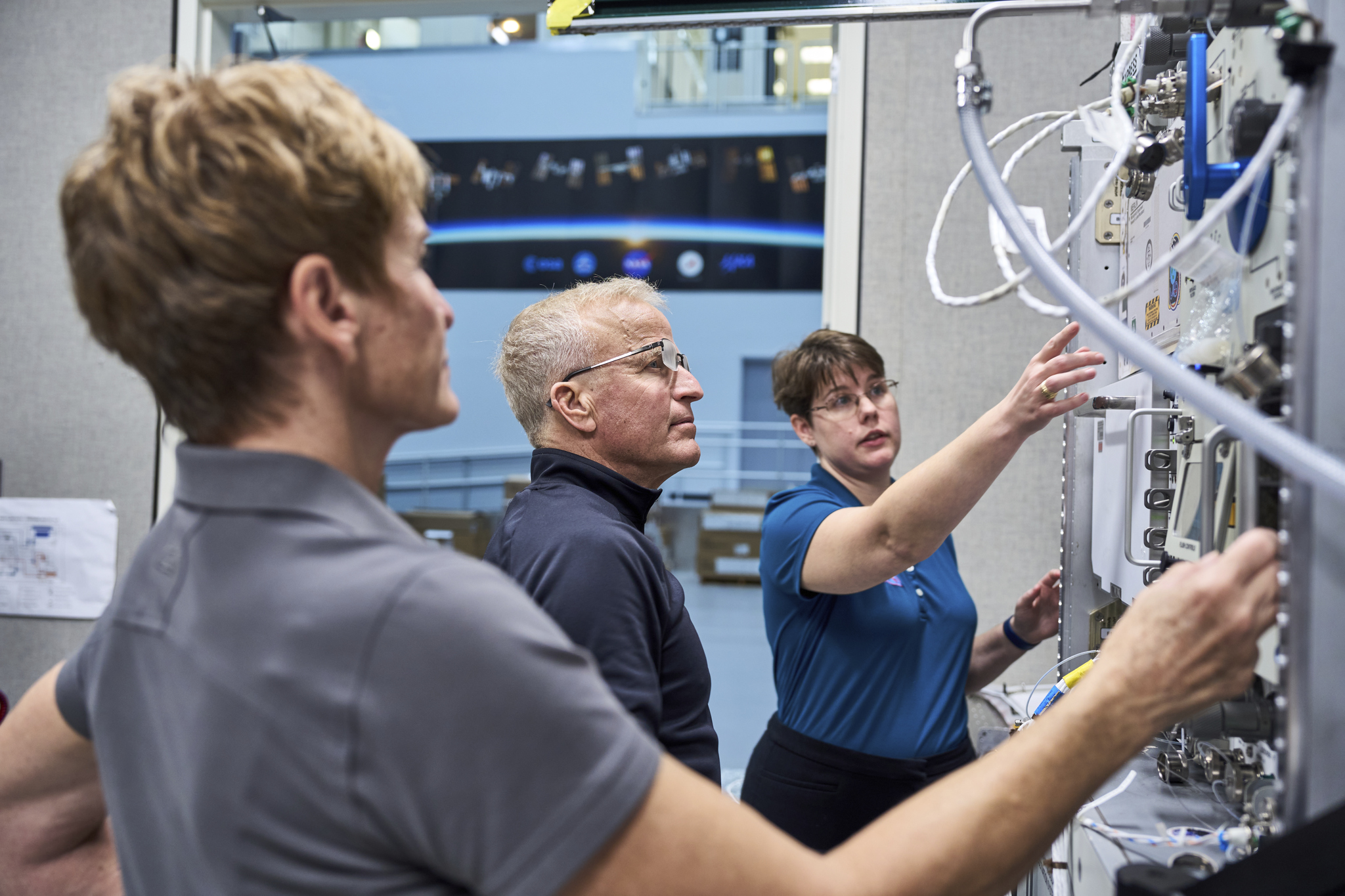
Some low-priority activities, such as media events, have been dropped from the Ax-2 manifest to ensure that all high-priority tasks fit into the rescoped eight docked days. But Mr. Hassmann refused to be drawn on the fees paid by Ax-2 private astronauts, noting simply that the “cost to send humans to space is dynamic and complex”.
Whitson and her crew will facilitate more than 20 multidisciplinary experiments spanning the life sciences, human research, physical sciences and technology. Additionally, they will support about 130 hours of National Lab Science during their time aboard the ISS.




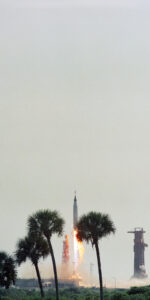
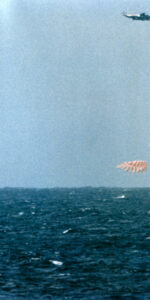
3 Comments
3 Pings & Trackbacks
Pingback:Axiom Space's Ax-2 Mission To Launch To The ISS With Private Astronauts And Stem Cell Experiments - Science News
Pingback:As Year’s 30th Falcon 9 Flies, SpaceX Scrubs Iridium/OneWeb Launch, Watches Ax-2 Weather - AmericaSpace
Pingback:SpaceX Launches Euclid to Probe the “Dark” Universe - AmericaSpace